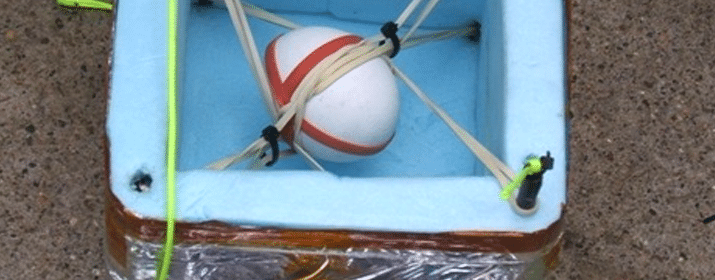I loved a lot of things about being a student. Getting to meet new teachers and learn from them was always great, and I loved it when I was put into a class with one of my friends. The best part of school, however, was always lunchtime. It seems that no matter what was going on throughout the day – a big exam, maybe, or a report that was due – the cafeteria was always a good time. Now that I’m back in schools training Educators to launch StratoStar’s weather balloons kits up into the atmosphere with their students, some things have changed. The technology in the classroom is different, but lunch is still the best part of the day. Maybe it won’t come as much of a surprise then that many students incorporate food into the expirments they send to the edge of space (20 miles above the Earth).
Sometimes the edibles the students send come back different, other times not so much, but either way, food serves to teach some amazing science lessons with missions to the edge of space and back. Here are 5 interesting foods students launched, and we discovered:
1. Coke Can
I wasn’t sure what to expect exactly when students sent up a single can of coke (miniature size). When the can came back, the students were hoping for a nice, refreshing, soda to celebrate the successful launch with, but the can was frozen solid! The students instead enjoyed a can of coca cola ice. The actual can, made from aluminum, did not insulate the liquid inside. So, as we passed the troposphere and neared the edge of earth’s atmosphere, the can of coke began to freeze, and it came back solid.
2. Marshmallows
Marshmallows have a naturally strange texture and feel, so I was immediately interested in how they would fare in the atmosphere. The results were something I’d seen before as a kid when I put a marshmallow in a microwave: they exploded! Just kidding, they actually grew in size much like in the heat of a microwave, the gooey treats expanded like a balloon due to dropping pressure as the payloads rose in the atmosphere.
3. Banana
When some students decided to send a banana up, we thought it might come back frozen or a little warped. To our surprise, the banana we recovered wasn’t yellow anymore, but completely black! The reason? As the banana froze in the upper atmosphere, its cells individually froze and ruptured, causing the dark color.
4. Bag of Chips
Sending a bag of chips up in a launch is actually a typical adventure for us at StratoStar. Students love to send a bag up and guess when it will explode, which is what happens most of the time. More interesting than the explosion, however, is occasionally the bag of chips will come back shrink wrapped. We actually don’t know why this happens, but it is theorized air in the bag seeps out of the glued seem and when the balloon burst and the expirments come back to Earth the pressure inside is less than the pressure on Earth and the bag shrink wraps the chips. This is an interesting illustration of the effects of pressure changes within a typical journey for our balloons.
5. Raw Egg
I was really eager to see what kind of funky things would happen to the egg. To my surprise, the egg came back the exact same as it left: normal. The hard shell of the egg acted as a guard from the pressure and the payload box protected it from temperature changes. While egg shells are fairly weak, their design proves to serve as a great defense for the egg when it really needs it.
Have we whetted your appetite for learning? What kinds of foods would you like to see launched? Tell us in the comments section below, and share your ideas for fun and interactive launch experiments!



